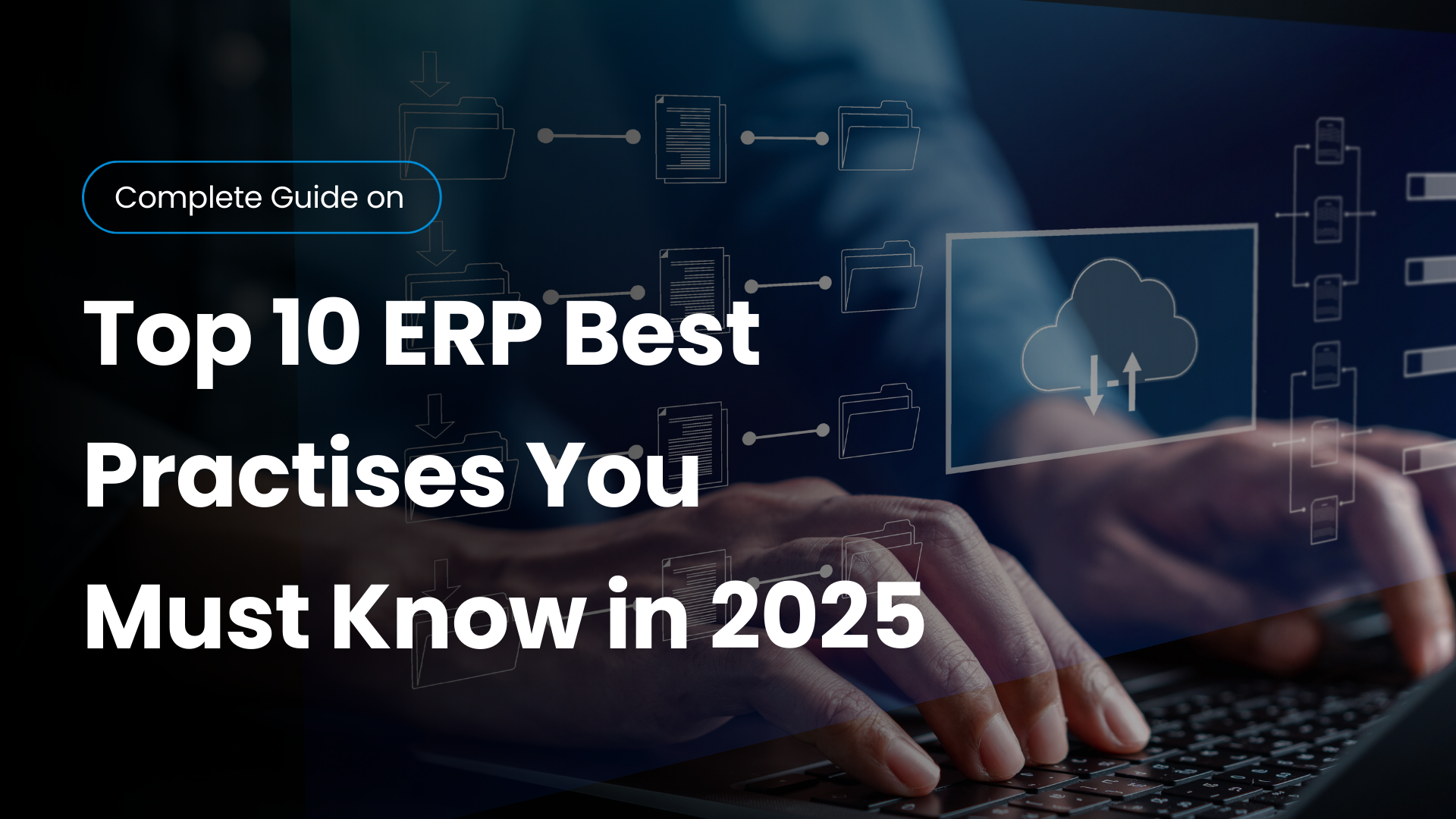ERP implementations often fail due to unclear goals, poor planning, and lack of user adoption. As companies push for digital transformation in 2025, knowing the best practices for ERP implementation is more important than ever.
This article tackles the key challenges businesses face during ERP rollouts and offers ten proven strategies to overcome them. Whether you’re upgrading systems or starting fresh, these insights will help ensure a smoother, more effective implementation.
Table of Contents
Introduction to ERP Implementation
When starting an ERP implementation, the first step is understanding what it really means. You’re not just installing software—you’re changing how your company works. An ERP system connects everything: inventory management, order processing, payroll integration, customer relationship management (CRM), and more. This helps you automate processes and make smarter decisions faster.
The ERP implementation process can feel overwhelming. It involves many people, tools, and deadlines. That’s why following ERP implementation best practices is key. With the right steps, your ERP deployment won’t just be a tech upgrade. It’ll be a complete transformation of your business goals and everyday operations.
Key Phases of an ERP Project Lifecycle
Every ERP project planning journey has stages. First, you prepare. You build your project team, define your needs, and pick the best software. Next comes ERP configuration—setting up the system to match how your business runs. Then, there’s testing, going live, and learning from how things work after launch.
These ERP deployment phases aren’t just boxes to check. Each stage needs attention. Skip one and you could end up with delays, confusion, or worse—total failure. Break things down. Assign clear project management tasks. Keep checking your progress. And most of all, stay flexible.
Top Business Benefits of a Well-Executed ERP
When done right, ERP system benefits can be massive. You get one source of truth for everything—from sales to accounting. No more guessing or waiting for reports. You see real-time data and act fast.
It helps you automate processes and reduce manual errors. You also get stronger workflow optimization. Want better supply chain visibility? Or faster order processing? A good ERP system delivers it all in one place.

1. Choosing the Right ERP Solution
Picking the right ERP software selection isn’t about getting the most expensive tool. It’s about finding a solution that matches your business goals and operations. A factory doesn’t need the same system as a school or law firm. You must understand what you really need before choosing.
Think about cloud-based ERP too. It’s easier to update and maintain. It helps you access data from anywhere. If you’re aiming for scalability, cloud ERP can grow with your business. Do a full cost analysis, and don’t forget to ask about long-term technical support.
2. Assembling Your High-Performing ERP Project Team
Your project team is the heart of your ERP implementation. Get this wrong, and everything else may fall apart. Start with an executive sponsor ERP—a leader who supports the project from the top. Then, assign project management, process experts, and IT support.
Clear project team roles prevent confusion. Everyone should know their part and be ready to work together. The best teams communicate often, share updates, and deal with problems fast. Strong collaboration and communication makes or breaks your ERP deployment.
3. Defining Requirements, Scope & KPIs
Before building anything, define your key requirements. What functions must the system have? How will you measure success? That’s where key performance indicators (KPIs) come in. They show if your ERP system is delivering value or not.
Keep your project focused. Don’t try to add features at the last minute. It leads to scope creep. Stick to your goals, document them clearly, and keep revisiting your KPIs during each stage.
4. Detailed Planning & Governance
Proper project planning is critical. Use a timeline that includes every phase. Add check-ins and milestones to keep things on track. Include rules for updates, scope changes, and issue tracking. This is your project’s governance model.
Make sure there’s a system for decisions. Who approves changes? Who checks budgets? Good project management depends on knowing who does what. And don’t forget risk planning. Expect the unexpected.
| Phase | Key Action | Owner |
|---|---|---|
| Planning | Finalize project scope | Project Manager |
| Configuration | Set up modules | IT Lead |
| Testing | Run user acceptance tests | QA Coordinator |
| Go-Live | Execute cut-over plan | Deployment Lead |
5. Data Migration Best Practices
One of the hardest parts of ERP implementation is data migration. Moving data from your old system to the new one sounds easy, but it’s not. Bad data slows everything down. That’s why you need a clear data migration strategy.
Start by cleaning your old data. Remove duplicates and fix errors. Then, map your data fields to the new system. Test the migration before go-live. Make sure everything ends up where it should. Don’t wait until the last minute.
Do you know the hidden risk of ERP Implementation? Read this guide
6. Change Management, Training & Communication
People don’t always like change. That’s why change management in ERP is so important. You need a plan to help your team accept the new system. This includes communication, involvement, and support.
Design a strong ERP training program. Teach users how to do their jobs using the new system. Use simple guides, videos, and one-on-one sessions. Keep an open feedback loop to encourage user adoption.
7. Testing & Quality Assurance
Before go-live, test everything. Run functional tests. Then do system integration tests to see how modules talk to each other. Next, check real-life use with user testing. This confirms the ERP system does what it should.
Record every problem and fix it. Keep testing until it works smoothly. Your quality assurance process ensures nothing breaks when you go live.
8. Go-Live, Support & Continuous Improvement
ERP go-live is when everything becomes real. You need a solid cut-over plan. That means clear steps, backups, and rollback options. After going live, the work isn’t over.
You need strong post-implementation support. Keep watching for issues. Collect end-user feedback and improve things. Your knowledge base will grow over time. Don’t stop enhancing your system.
9. Mitigating Common ERP Implementation Risks
Many projects fail due to poor planning or lack of focus. Common ERP implementation challenges include scope creep, poor data quality, and low user adoption. One missing feature can delay the whole system.
Plan for these risks early. Assign owners for risk areas. Use weekly reviews and issue logs. Stay proactive. That’s how you prevent failure.
10. Emerging Trends in ERP Implementation
ERP systems are always evolving. AI is helping teams get better insights through real-time reporting. Some companies use predictive tools to fix issues before they happen. These upgrades make workflow optimization faster.
There’s also growth in low-code platforms, mobile access, and advanced system integration. These trends are making it easier and cheaper to build custom ERP experiences.
Final Thought:
Following these ERP implementation best practices sets your business up for long-term success. Don’t rush. Don’t skip steps. Make the most of your ERP system by focusing on people, planning, and performance. When done right, ERP becomes more than just software—it becomes the engine of your growth.
Over-customization can also extend the typical ERP implementation time, leading to project delays. At Infintrix, we help businesses implement ERP solutions like Odoo and ERPNext with a smart, streamlined approach—ensuring only necessary customizations are made to reduce risk and maximize long-term efficiency.
FAQs (Frequently Asked Questions)
How long does ERP implementation take?
It depends on company size and scope. Most take 6–18 months.
What is the ROI of an ERP system?
Companies often recover costs in 1–3 years with better efficiency and fewer errors.
Is cloud ERP better than on-premise?
Cloud ERP is easier to maintain and update, especially for smaller teams.
What if the system doesn’t meet our needs?
Use feedback from users and keep improving it post-launch.
Should we customize the software?
Only if it’s truly necessary. Too much customization increases cost and risk.

